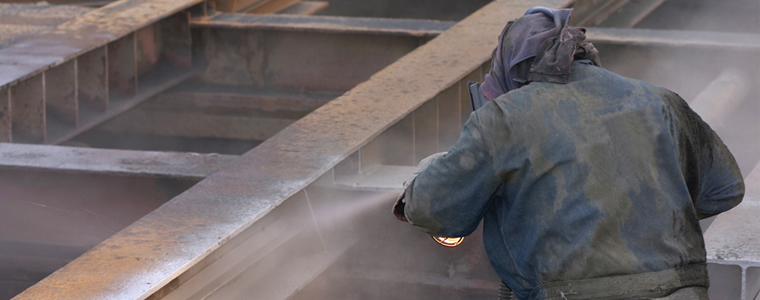It’s like a mantra for painters. We’ve said it on our blog before. “Never paint a dirty surface.” Improper surface preparation is a surefire way to derail an industrial painting project before it really gets moving. Some statistics suggest that the vast majority of coatings failures can be traced back to inadequate surface preparation. To be sure, surface preparation is a portion of your project you want to make sure your industrial painter has the skills and experience to execute flawlessly.

Careful consideration must be taken to ensure the surface is free from oil and dirt, preexisting layers of paint, excess moisture, rust and other contaminants. Readings must also be taken to ensure ambient conditions fall within recommended range for moisture and temperature for the product being applied. Surface preparation is such an important part of any painting job that it should receive its own section in the thorough job specification document that outlines all the work to be done on a given project.
The method
The method used to prep a surface before painting will rely on a number of factors. The substrate (surface to be painted), environment and desired service life of the coating to be applied will all factor into the decision. Blast profile depth is another important measure when determining which method of surface preparation is right for your project. This will tell you how rough or smooth the substrate needs to be for optimum coating adhesion. Some coatings require a profile as low as half a mil (very smooth) or as high as five mils (very rough).
Standards set by The Society for Protective Coatings (SSPC) codify surface preparation to assure owners that they are achieving the same results from project to project and painter to painter. These standards specify what the substrate should look like after various levels of preparation. They correlate to different tools used in the process, with standards for high-pressure water jetting, slurry blasting, sandblasting and other methods.
It should be noted that these SSPC standards are not numerically ordered by cleanliness or other statistic, with SSPC SP 1 being the cleanest and SSPC SP 16 being the least clean, or vice versa. The numbers simply stand for different methods of surface preparation.
Talk to a painter
Surface preparation is an umbrella term for a large number of techniques, each with their own strengths and weaknesses when it comes to readying a substrate to be painted. It can take an entire career to master them all. That’s why it’s important that a qualified professional lays out this section of the process specifications, and experienced applicators execute this crucial portion of the job.
If you’re ready to talk about surface preparation taking place of your building or equipment, get in touch with Thomas Industrial Coatings to get the conversation started.


